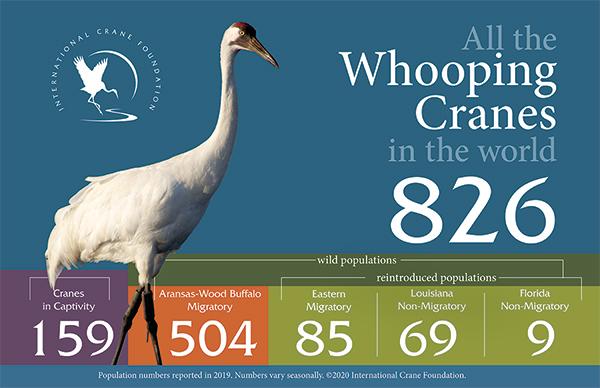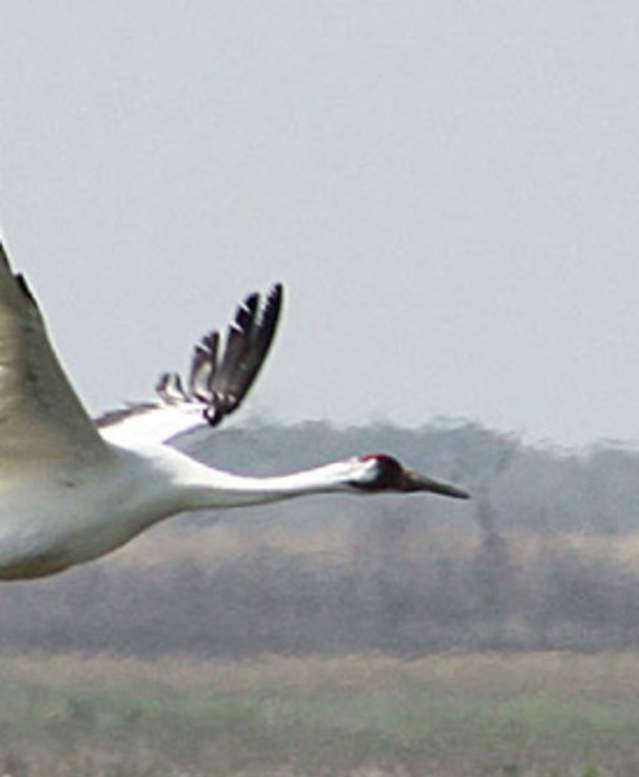The Whooping Crane
The endangered Whooping Crane is the rarest of all cranes and among the oldest living bird species on the earth.
Description
Adult cranes are almost entirely white, with the only non-white markings being their black wingtips and black facial markings, a bare patch of red skin on top of their heads and black legs and feet. Wingspans can be seven to eight feet with their weight averaging 15 pounds which makes them adaptable to flying long distances. Chicks are a cinnamon brown color and grow up to one inch per day during their first summer.
Whooping Crane Festival
The recovery and conservation efforts to protect and save whooping cranes from extinction has, and continues to be a phenomenal story involving many partners around the world. Join us at this educational and enjoyable festival to learn more about the ongoing efforts to protect and conserve this rarest of species.
Proceeds from the Whooping Crane Festival benefit the conservation of whooping cranes through The International Crane Foundation.
The International Crane Foundation
The ICF, located in Baraboo, Wisconsin, works worldwide to conserve cranes and the ecosystems, watersheds, and flyways on which they depend. They provide knowledge, leadership and inspiration to engage people in resolving threats to cranes and their diverse landscapes. The ICF commits to a future where all crane species are secure — a future where people cooperate to protect and restore wild populations and their ecosystems. These efforts sustain the places where cranes live, to the benefit of countless other species.

Population numbers reported in 2019. Source: International Crane Foundation.
Winter Birding Guidelines
Applies to Trail Use October 30–April 30 (or when Whooping Cranes are present):
Nature Preserve ordinance rules always apply, including but not limited to: open sunrise to sunset; no fishing, hunting, or gathering of any natural materials; no littering; no injuring or harming wildlife; no pets.
- Visitors must stay 1000 feet from Whooping Cranes. They should never be approached or disturbed. If you see Whooping Cranes within 1000 feet of the trail, please do not enter the trail.
- If visitors are already on a trail and whooping cranes are within 1000 feet, they should stop, remain quiet, and observe their behavior.
- If the Whooping Cranes become alert, raise their heads, and stop foraging—you are too close. Turn around if possible or wait and allow the whooping cranes to establish a safe distance before proceeding.
- If the cranes do not seem bothered, you may proceed with caution. Walk slowly and remain quiet. If biking or running, walk slowly through the area.
- If rules are not followed and cranes are not safe, trail closures may occur. If trail closures occur, guided walks will be available.

